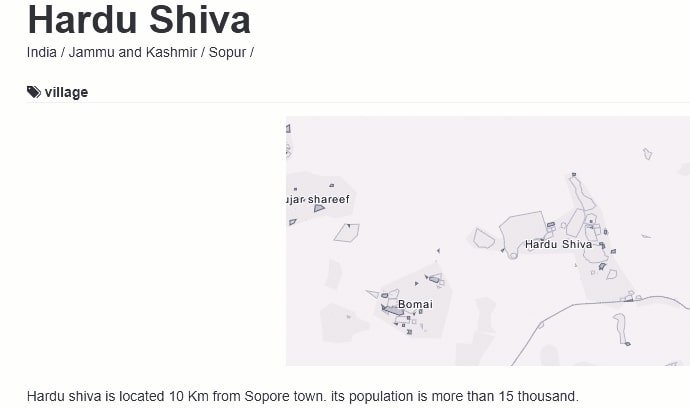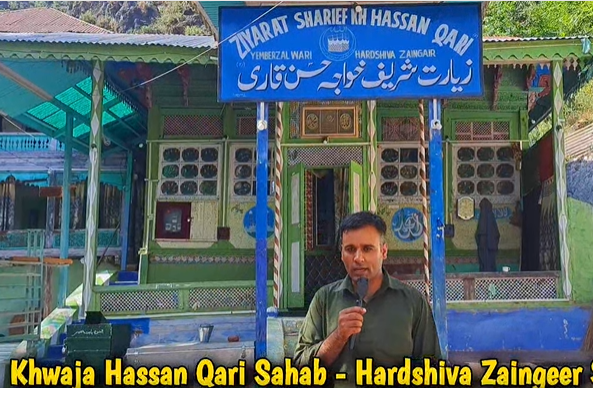(Kashmir Rechords Exclusive)
Nestled in the mountainous Zaingir Belt of North Kashmir lies the village of Shiva, a place rich in history and spiritual significance. Named after Lord Shiva, this village was once a pilgrimage destination for Kashmiri Hindus, especially during the festival of Shravan Purnimashi. Devotees from far and wide would visit the sacred spring here, much like they do at the Holy Cave Shrine of Amarnath Ji, to offer their prayers to Lord Shiva.

The Vanishing Memory of a Sacred Site
Today, the story of Shiva’s Spring is one of fading memories and lost reverence. Many wonder why this once-sacred site has not been preserved or celebrated over the years. To learn its true history, one must turn to the Kashmiri Pandits of Sopore and the surrounding Zaingir Belt, historically known as Uttar Machipora. They recall a village known for its dense forests and traces of iron ore, still standing amidst the hills, with its name echoing its spiritual past.

Changing Landmarks and Lost Symbols
Atop a hillock, the sacred spring of Lord Shiva still exists, once providing potable water to the villages below. At the foothills lies the “Ziyarat” of Khwaja Hassan Qari, a revered Muslim saint. This area, once a symbol of coexistence and shared spiritual heritage, has witnessed significant changes over time. Hindu residents of Sopore recall that the spring once housed a Shiv Linga, a powerful symbol of Lord Shiva. However, in the 1970s, during the rise of Jamat-e-Islami leader and former MLA Syed Ali Shah Geelani in this area, the Shiv linga mysteriously disappeared. The event was met with only symbolic protest, marking a turning point in the site’s history. Despite these changes, local Pandits continued to visit the spring at Shiva village, also known as Hard-Shiva in official records, until their migration in the 1990s.
Historical Accounts and the Mystery of the Lost Cave

Kashmiri Muslim historian Muhammad Din Fauq, whose ancestors lived in Hardu-Shiva before migrating to Lahore, often visited the Zaingir area. In his writings between 1905 and 1917, Fauq makes several references to the sacred Shiva spring and its significance. He also calls it “Anantnag’’, as Pandits used to call it. He also mentions a mysterious cave near Shiva village, where, in 1905, some people made unsuccessful attempts to explore its depths. Fauq notes that the government of the time provided support to devotees visiting various Hindu shrines in the Zaingir Belt, including Shiva’s Spring—a practice that has since faded from memory, particularly after the mass migration of Kashmiri Pandits in the 1990s.


Shiva’s Forests and the Transformation of a Region
Hard-Shiva, located just 10 kilometers from Sopore town, was once a major village in the Zaingir Belt (Uttar Machipora tehsil). The area’s earlier name, Hari Gir (meaning “Lord’s Forest”), reflects its deep connection to Lord Shiva, much like Gagan Gir on the way to Sonamarg, Kashmir. However, after the reign of King Zain-ul-Abidin, who is credited with constructing a canal named after himself, the area underwent a transformation. The canal, known as “Nehar-e-Zain Gir,” still flows through the village, a reminder of the region’s layered history.
A Heritage Worth Remembering
Today, Shiva’s Spring and the beautiful village that bears its name stand as silent witnesses to a bygone era. The memories of this sacred site, accessible only by a winding road, are slowly fading, especially after the 1990 migration of Kashmiri Pandits. Yet, the story of Shiva’s Spring is a poignant reminder of Kashmir’s rich and diverse heritage—a heritage that deserves to be remembered and preserved for generations to come.

